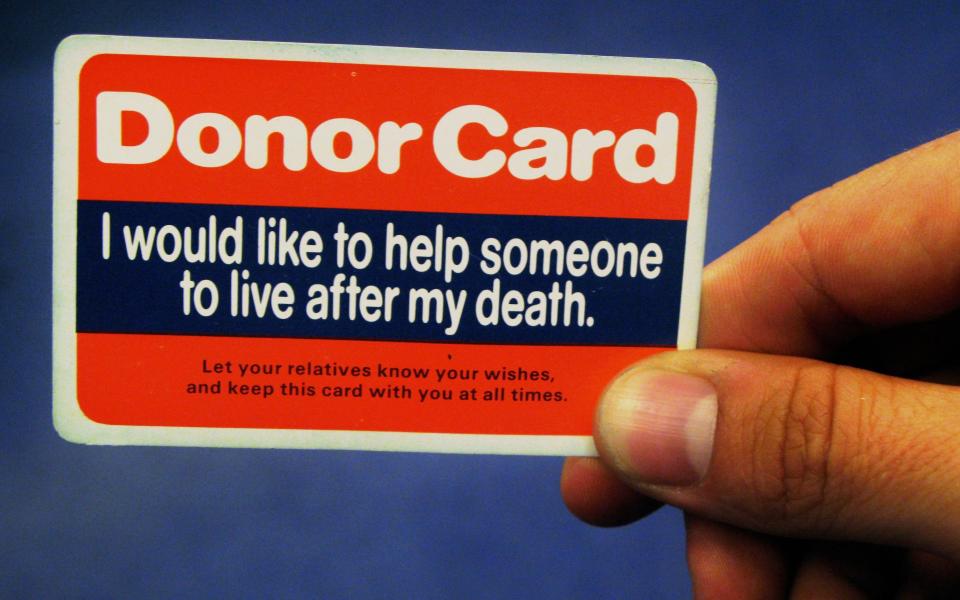Organ donation breakthrough promised after new tissue warming discovery
A groundbreaking new method of safely reviving frozen organs promises to save millions of lives by ending the donor shortage crisis, scientists have said.
Researchers have discovered how to successfully rewarm heart valves and blood vessels that had been preserved for a long periods at very low temperatures.
The new technique promises to enable the safe long-term storage of donated organs such as hearts and lungs, more than 60 per cent of which currently have to be discarded because they cannot be kept on ice for more than a few hours.
This is the first time that anyone has been able to scale up to a larger biological system and demonstrate successful, fast, and uniform warming
Professor John Bischof, University of Minnesota
It means hospitals should be able to create banks of donated organs, to which patients can travel at their convenience, rather than frantically trying to find suitable recipients when a donor dies.
According to recent estimates, if even half of organs that are currently thrown away were successfully transplanted, transplant waiting lists could be eliminated in less than two years.
Long-term preservation methods, like vitrification, that cool biological samples to an ice-free glassy state - between -160 and -196 degrees Celsius - have been around for decades.
The major hurdle, however, has come at the rewarming stage, when tissues often suffer major damage, especially at larger scales.
In this new study, the researchers addressed this rewarming problem by developing a new method using silica-coated iron oxide nanoparticles dispersed throughout a solution that included the tissue.
The iron oxide nanoparticles act as tiny heaters around the tissue when they are activated using noninvasive electromagnetic waves.
This rapidly and uniformly warms cells at rates of 100 to 200 degrees Celsius per minute, 10 to 100 times faster than previous methods.
"This is the first time that anyone has been able to scale up to a larger biological system and demonstrate successful, fast, and uniform warming of hundreds of degrees Celsius per minute of preserved tissue without damaging the tissue," said John Bischof, mechanical engineering professor at the University of Minnesota and senior author of the study.
After rewarming and testing for viability, the results showed that none of the tissues displayed signs of harm, unlike control samples rewarmed slowly over ice or those using convection heating.
The researchers were also able to successfully wash away the iron oxide nanoparticles from the sample following the warming.
In the past, researchers had only been able to successfully warm one milliliter of tissue in solution.
However, in the new study, which published in the journal Science Translational Medicine, they warmed 50 milliliters of animal heart valves and blood vessels, indicating that the technique could be scaled up to full human organs.
At a glance | How to become an organ donor
Prof Bischof said the discovery is the result of his team's research in many different fields to preserve or destroy cells and tissue at either ultra high temperatures or ultra low temperatures.
"We've gone to the limits of what we can do at very high temperatures and very low temperatures in these different areas,” he said.
"Usually when you go to the limits, you end up finding out something new and interesting.
“These results are very exciting and could have a huge societal benefit if we could someday bank organs for transplant."
Although scaling up the system to accommodate entire organs will require further further research, the authors of the study say they are optimistic.
They plan to start trials on the organs of animals like rats and rabbits, before moving onto whole pig organs, and then those of humans.
The British Medical Association is currently lobbying for the law to be changed to create an “opt-out” system for organ donation in England, to overcome the shortage of available organs.
Wales shifted to a system of “soft opt out” or “deemed consent” in 2015, allowing people to either register a decision to opt in, opt out, or do nothing, which doctors say doubled the number of organs available for transplants in the first six months.
One of the many scientific objections to cryonic preservation of humans once they die is concern over how to safely warm the body once it is taken out of cold storage.
The new technology may possibly offer a solution, however the scientific consensus remains that it would nevertheless be impossible to restore life to a body that had died.
The method, might also be applied beyond cryogenics, including delivering lethal pulses of heat to cancer cells.

 Yahoo News
Yahoo News 

